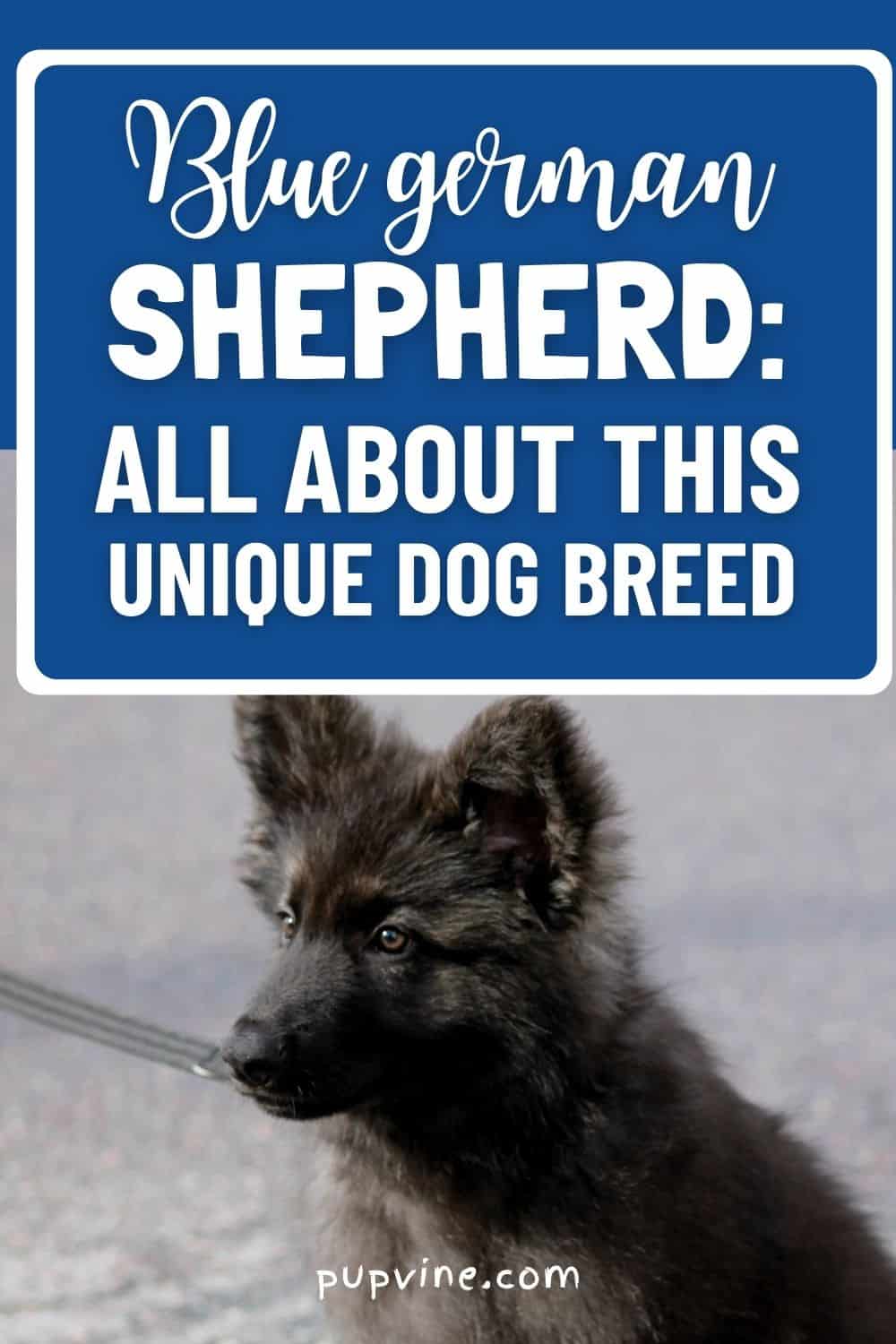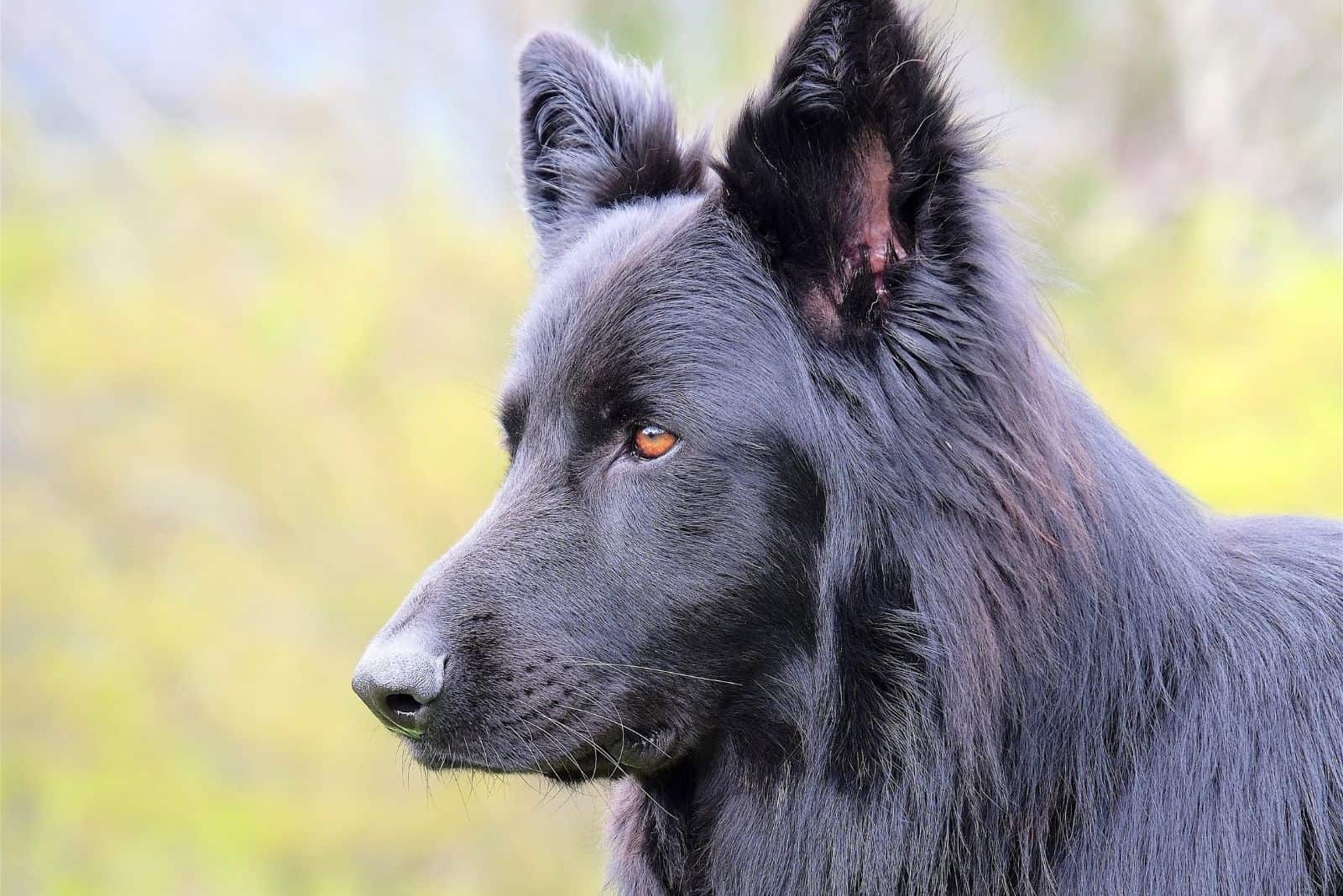At least half the people in a room will say german shepherds are black and tan. The other half will agree.
But, how much do we really know about this dog breed? Many people have never heard of the blue German shepherd. What is it? Is it a mix-breed?
Can it count as a legit breed? Is it… a big bad wolf? We’re here to bust the myth.
The blue German shepherd dog is a brother to the regular german shepherd – not a brother from another mother, the real one. This dog is as much of a german shepherd as any Rex from the movies.
The question is: “Why is it blue?”
Technically, it’s not blue, rather dark grey. And it’s a fairly young breed. To see how this unique breed was created, we have to go way back… Okay, maybe not THAT far.
The Origins: The History Of The Blue German Shepherd
Location: Northern Germany
Time: Early nineteenth century
Goal: To create a standard working dog.
A German cavalry officer, Von Stephanitz, was on the brink of major success in his area. There were no dog breeds that could satisfy Von Stephanitz’s needs for working dogs.
However, a single dog show changed everything. Von Stephanitz saw a dog that was the perfect breed standard for his working dog.
It took forty years and the best canines from all German districts to create what we have today: a blue German shepherd.
It is believed that the blue GSD is a mixture of French and Italian herding dogs.
Like his brother, the German shepherd dog, the blue German shepherd is a descendant of Honrard von Grafrath, the first-ever German shepherd dog.
Once bred for herding, this dog breed is now a beloved family pet for those who love action.
The Blue Pigment: Why Is It There?
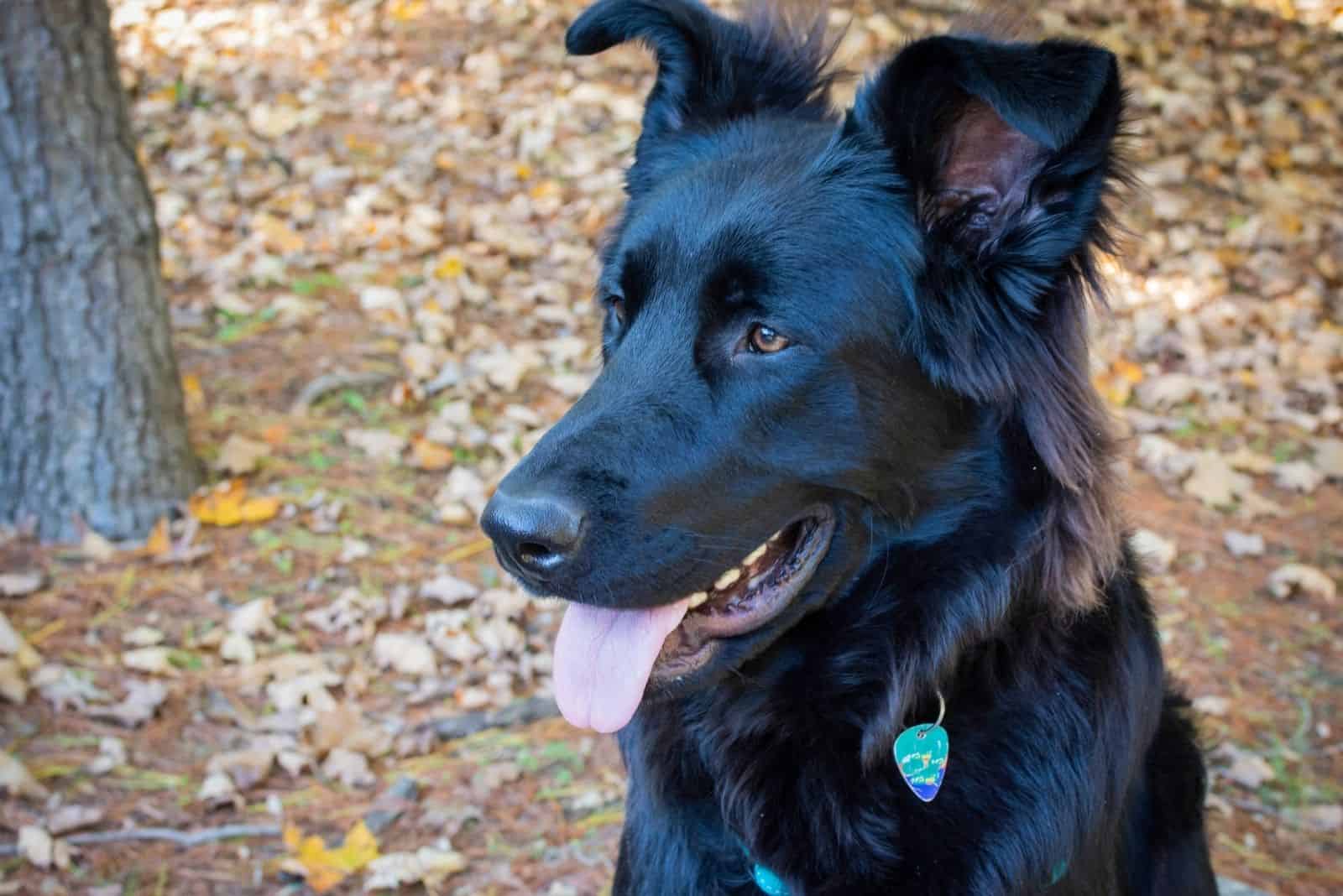
The blue German shepherd is not actually a Blue Bay shepherd or a Nordic shepherd. It’s a purebred with its own unique characteristics, the blue coat being the biggest one. It isn’t a blue heeler German shepherd mix either!
These dogs do have the same bloodline, but they all come from the aforementioned German shepherd. You can say they’re a color variation of the standard German shepherd but much more expensive.
These dogs’ specific blue color presents as a sort of diluted version of the standard German shepherd. The “Dd” solution gene affects not only the coat color but also the color of the eyes and nose.
Let’s put this science in layman’s terms. All genes come in pairs. When a big “D” gene meets a small “d” gene, a blue GSD is created.
The dominant gene is the big D, and it stands for the main coat color. The little d stands for the dilute color, which is the recessive gene.
The blue shepherd requires two copies of the dilute gene, one from each parent, to have a dilute coat.
The planned breeding of two blue shepherd dogs will result in the birth of blue German shepherd puppies. However, there are occasions when a blue shepherd puppy is born in a non-blue family.
Such a situation happens when both parents carry a recessive gene.
There are three variations in the blue color, all resulting in a bicolor coat:
• blue and black
• blue and sable
• blue and tan
Also, varieties of a lighter shade (powder blue) and darker (steel blue) are often found.
Despite being a popular dog breed, blue German shepherd dogs are the subject of color discrimination, especially in dog shows, much like their close relative, the Belgian Malinois. The American Kennel Club recognizes the blue color as a fault.
No matter the AKC’s stand on the blue shepherd’s status, this dog always was and remains a German shepherd, just a different color one.
Appearance: How Do You Spot A Blue GSD?
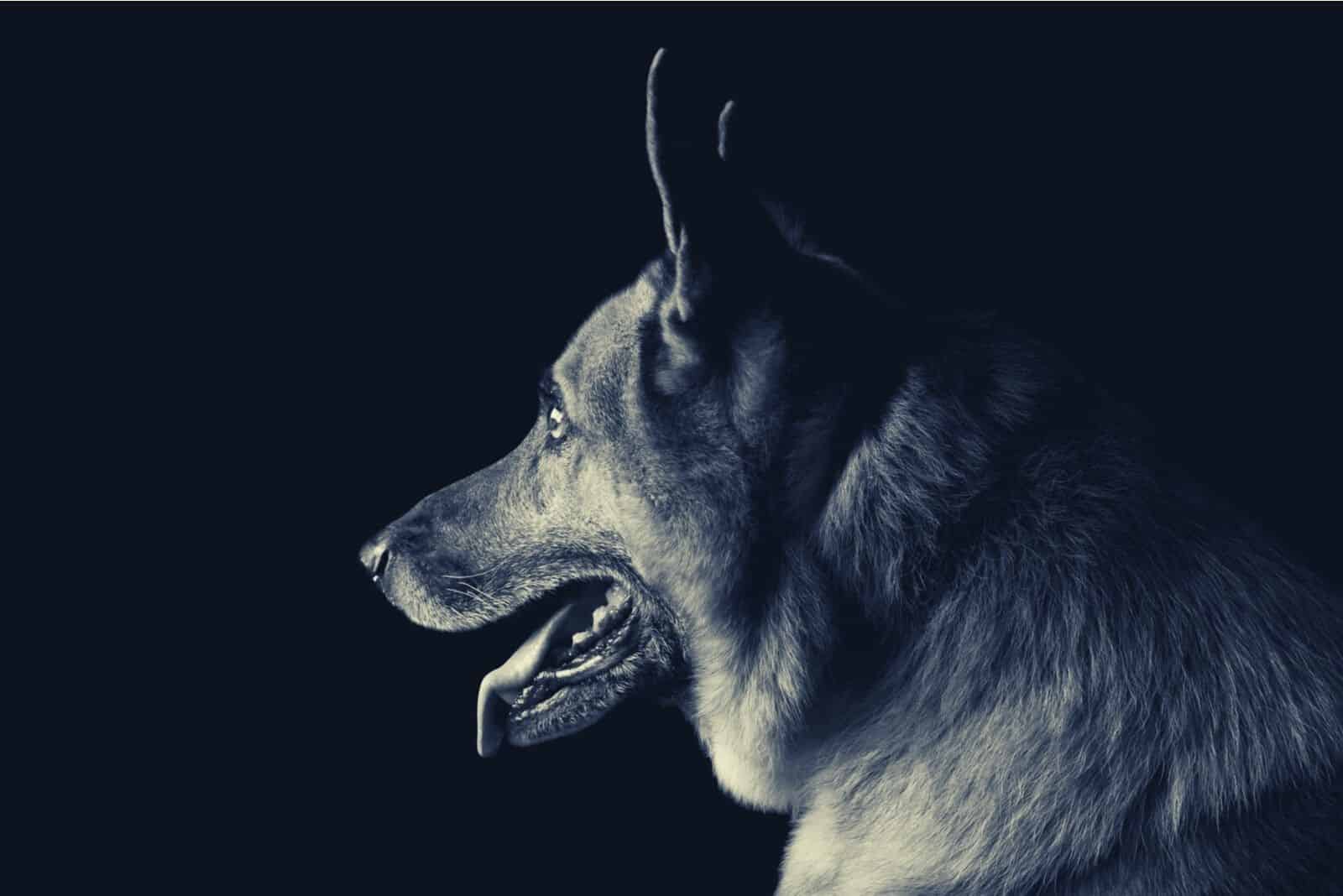
Besides the different coat coloration, blue German shepherds have the same characteristics as regular German shepherds.
Usually, the standard German shepherd will have a black saddle and a mask. The dogs with the dilute gene will have these areas in steel blue.
These dogs weigh from 65 to 90 pounds and measure 24 to 26 inches in height from paw to shoulder. The females are slightly lighter and smaller. Their weights vary from 50 to 70 pounds. The height is usually 22 to 24 inches.
If you’ve never seen a blue German shepherd, just imagine a solid black German shepherd covered in flour.
Besides, the blue GSD has lighter eyes. That dilute gene results in light blue eyes, golden brown, and yellow eyes.
When a blue gene is present, the eyes will be a lighter color and thus tell you if it’s a blue German shepherd in question.
However, one must never think a blue German shepherd is a mixture of a wolf and a dog because of the coat and eye color. This is a species of its own.
The blue shepherd has a dome-shaped head with a long, square muzzle. Their ears are erect, and the necks long. They are a strong, agile breed that resembles their distant ancestor, the wolf.
These dogs have one of two coats, medium or long. They’re both dense, double coats with a layer of soft undercoat.
Bear this in mind if you want to get a blue German shepherd puppy for your family since they shed a lot and cause allergies.
Personality: The German Shepherd Dog’s Nature
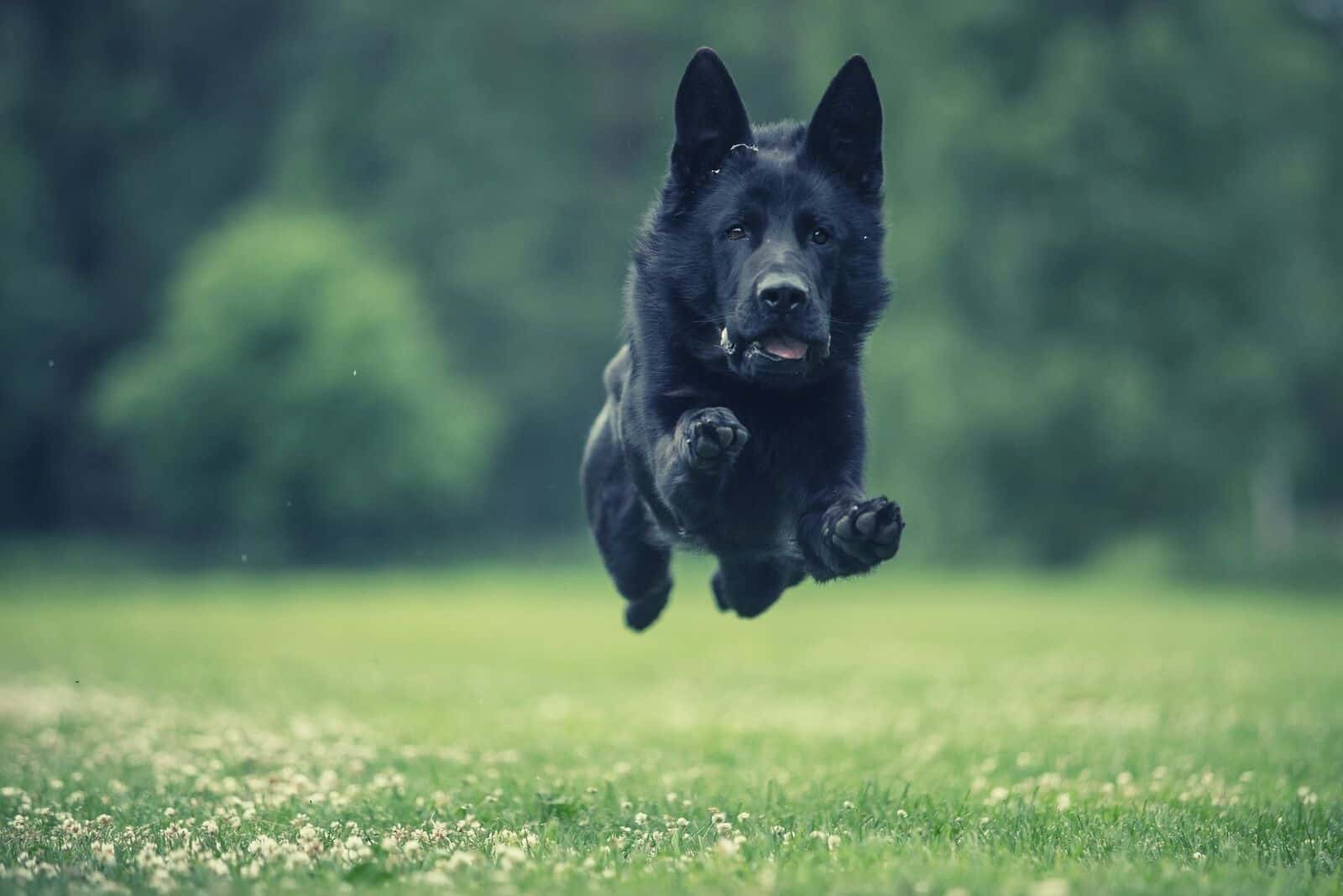
The German shepherd is a popular dog choice for many families across the world. This is a one-person dog, very affectionate towards kids and its master.
The reason behind his guarding attributes lies in the fact the blue GSD was bred as a working dog to serve and protect the family.
Sometimes they tend to act too possessive and are aloof with strangers. They will show their displeasure by barking.
Anyhow, the German shepherds are generally a very caring and loving dog breed that likes showing affection and enjoys being socialized.
If you don’t reciprocate their love, the dogs will become anxious and show destructive behavior. They may even become aggressive. Hence, they’re not the type of dogs to be left alone at home while you’re at work.
All in all, those of you who are seeking a confident and courageous paw pal should keep an eye on this breed. The blues are full of surprises!
Settling In: The Blue GSD In Your Home
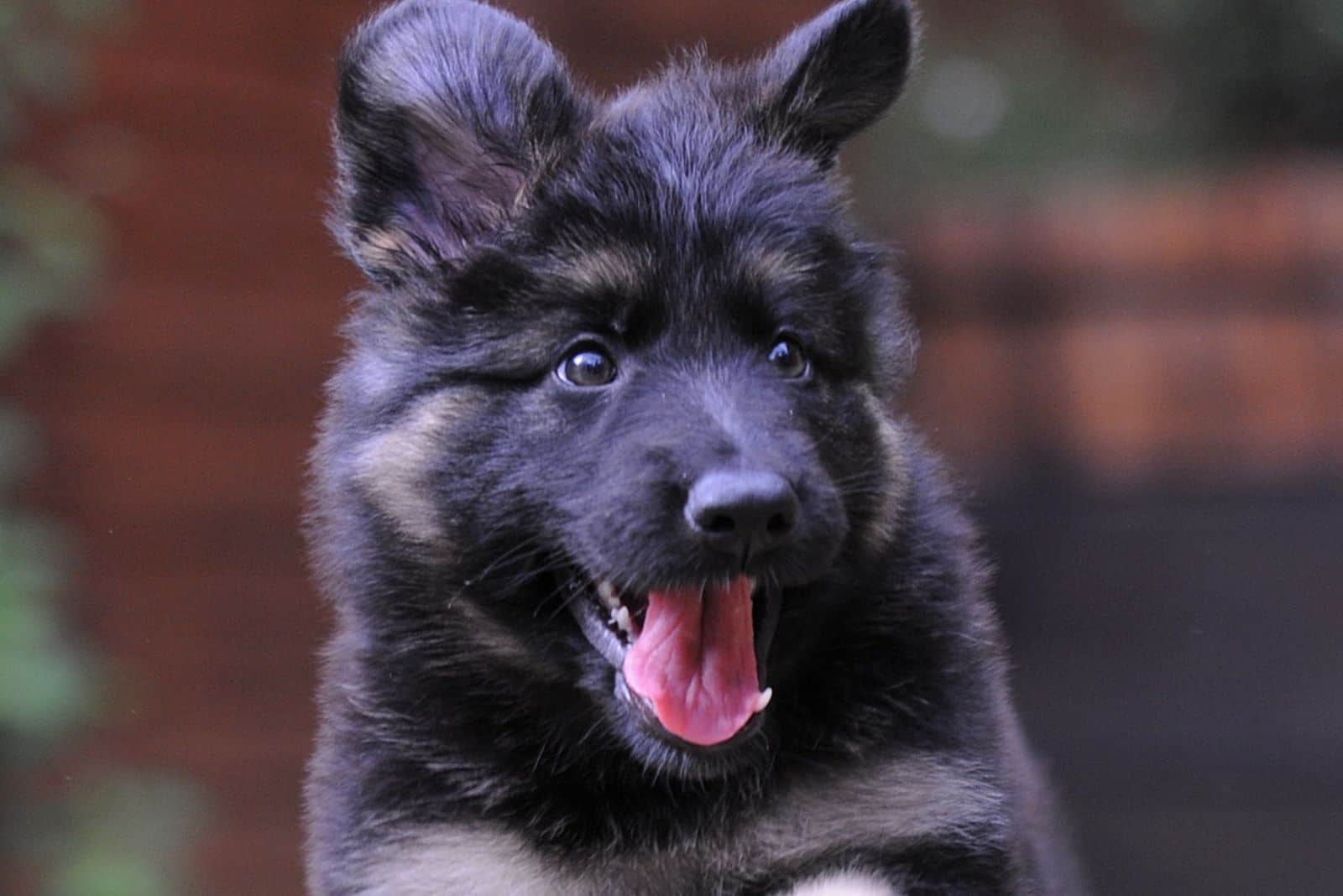
Looking for a cuddle dog you can sit with on the sofa and just do nothing? You’re lucky because the blue GSD is all that and more! This dog breed will show you how affectionate he is anytime he gets a chance.
But, only if you’re a family member or a close someone. The blue shepherd is rather suspicious of strangers and stands on guard. No wonder this breed was once used for protection purposes!
Consider yourself blessed if your dog spends more time with you than other family members. It’s a general trait of this breed to attach themselves to one person. Once you get a blue German shepherd, you’ll have a friend for life!
Still, that friend might suffer if the conditions at home aren’t ideal. Small apartment with no outdoor space?
Better think again about getting one of these loveable pups. This breed grows big and needs space for daily exercise, not to mention to move around.
Train hard, show love, expose the dog to different stimuli, and you’ll have an amazing example of the breed.
Activity: How Much Exercise Does A Blue German Shepherd Need?
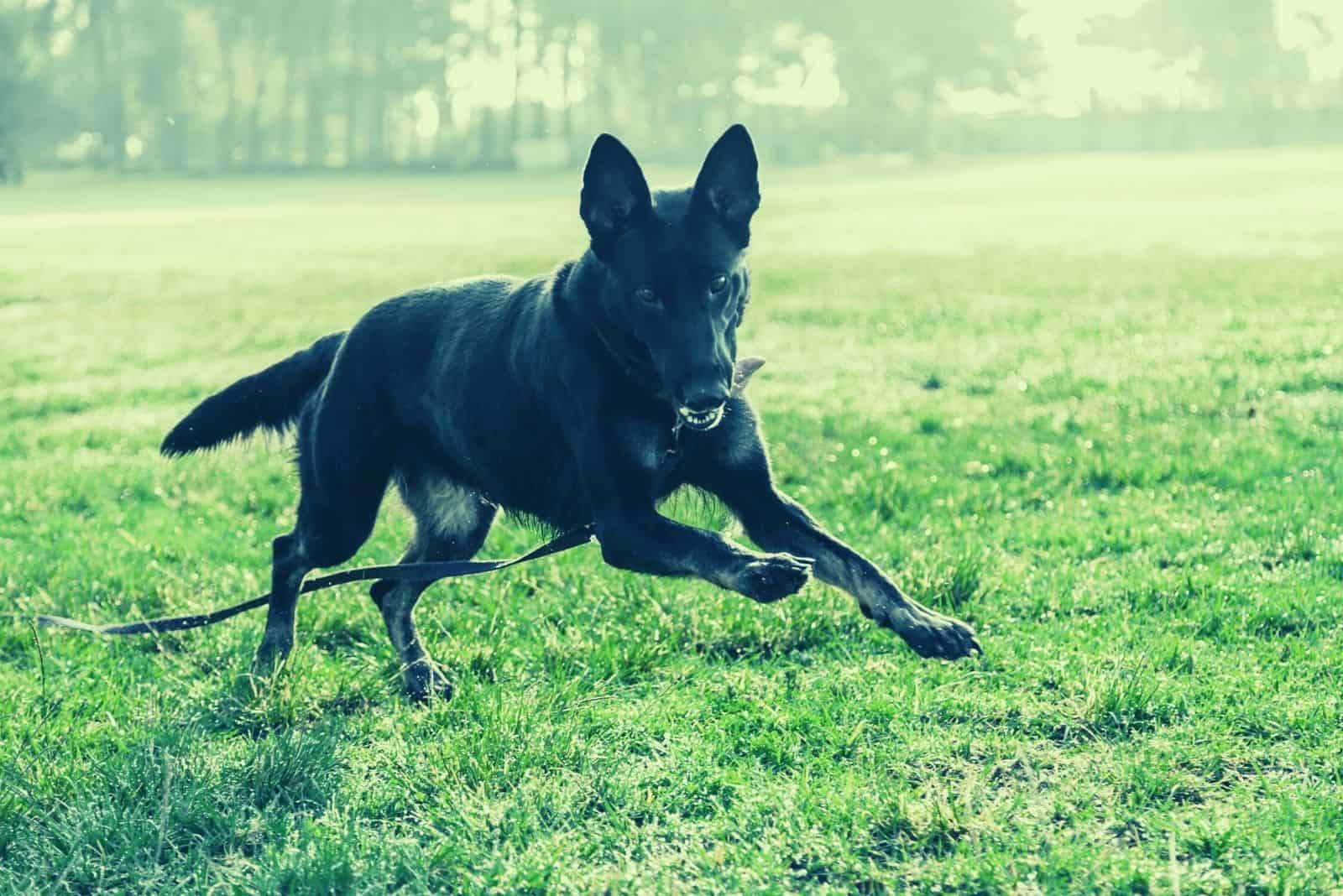
It’s an unwritten rule that the German shepherds are the number one choice for military and police forces. Just remember how many times you’ve seen a GSD acting as a sidekick in an action movie! A LOT, that’s for sure.
These dogs are not a favorite by chance. They’re extremely smart, agile, and require daily exercise. Otherwise, this dog will become destructive due to frustration.
It’s best if you don’t go with this breed if you can’t spend an hour a day of extreme exercise, crossing over an agility course, or playing interactive games.
Mental stimulation and socialization from a young age are critical as these are guard dogs.
Pay special attention if you want your dog to use a harness. The trait of pulling the harness has stuck ever since their herding days, so you need to properly train your blue.
Otherwise, people will ask: Who’s walking who here?
Training Tips: How Do You Have An Obedient Blue Shepherd?
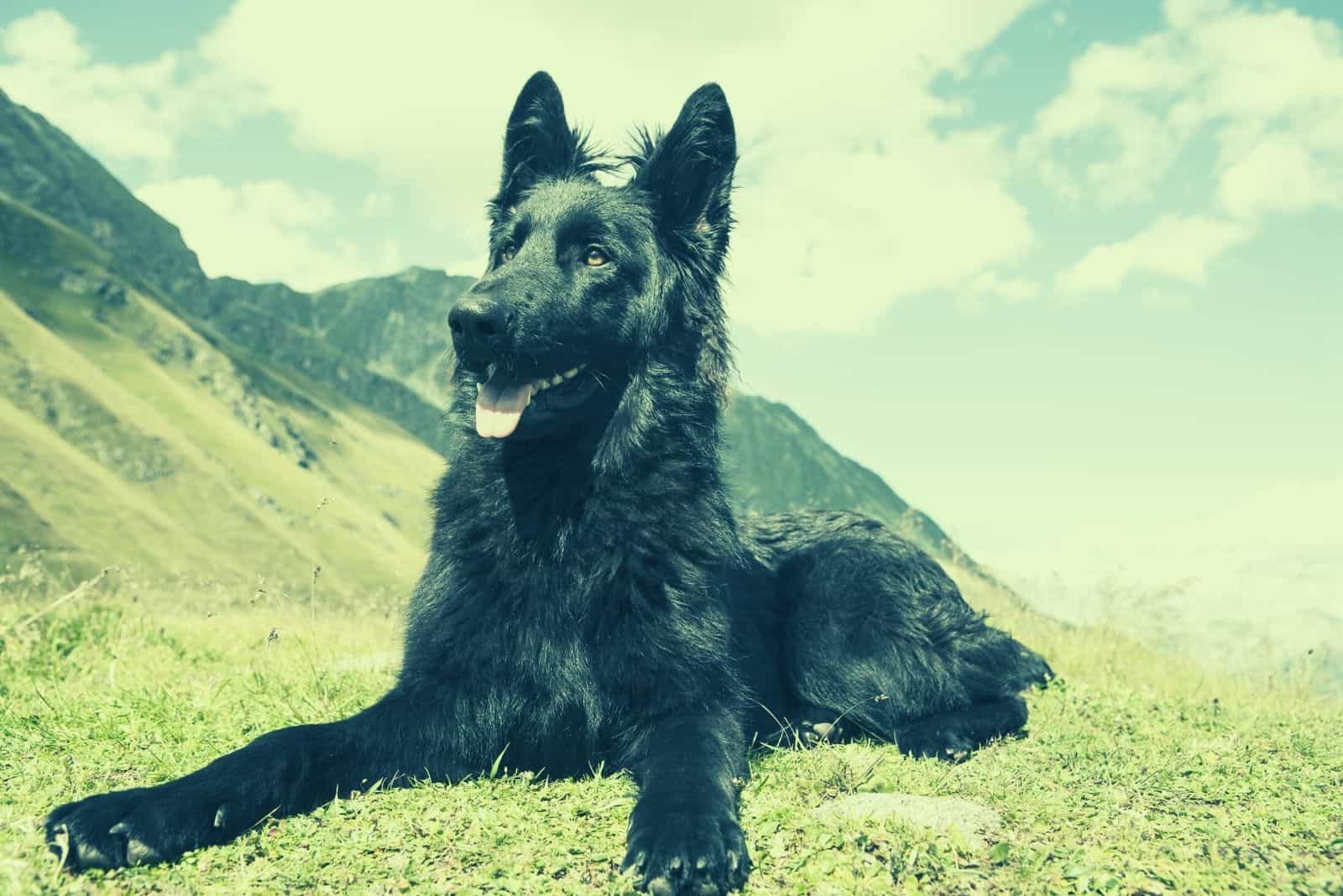
Hey, did we mention how intelligent blue German shepherds are? Well, it won’t hurt if we say it one more time. This breed is remarkably intelligent.
With lots of encouragement from your side, the training will be a piece of cake… a dog cake!
Start at a young age. This is a breed that can’t stand being alone for too long, so try to avoid that as much as possible.
Instead, start with leaving your puppy for a short period, e.g., thirty seconds. Always go with positive reinforcement upon returning, no matter how badly the dog behaved.
Furthermore, in the following weeks, start replacing that time frame with a bigger one. Listen to your dog and look closely at how it feels when left for too long.
One step at a time will lead your blue pup to become one independent dog.
Whatever you do, do not use the outdated dominance-based approach. This will result in fear and fear only, and you’ll never get the dog to respect you as he should.
As I said, this is an intelligent breed, so you shouldn’t have additional problems with other training.
Patience is the key to everything, including raising a puppy!
What’s On The Menu: The Food Habits Of A Blue GSD
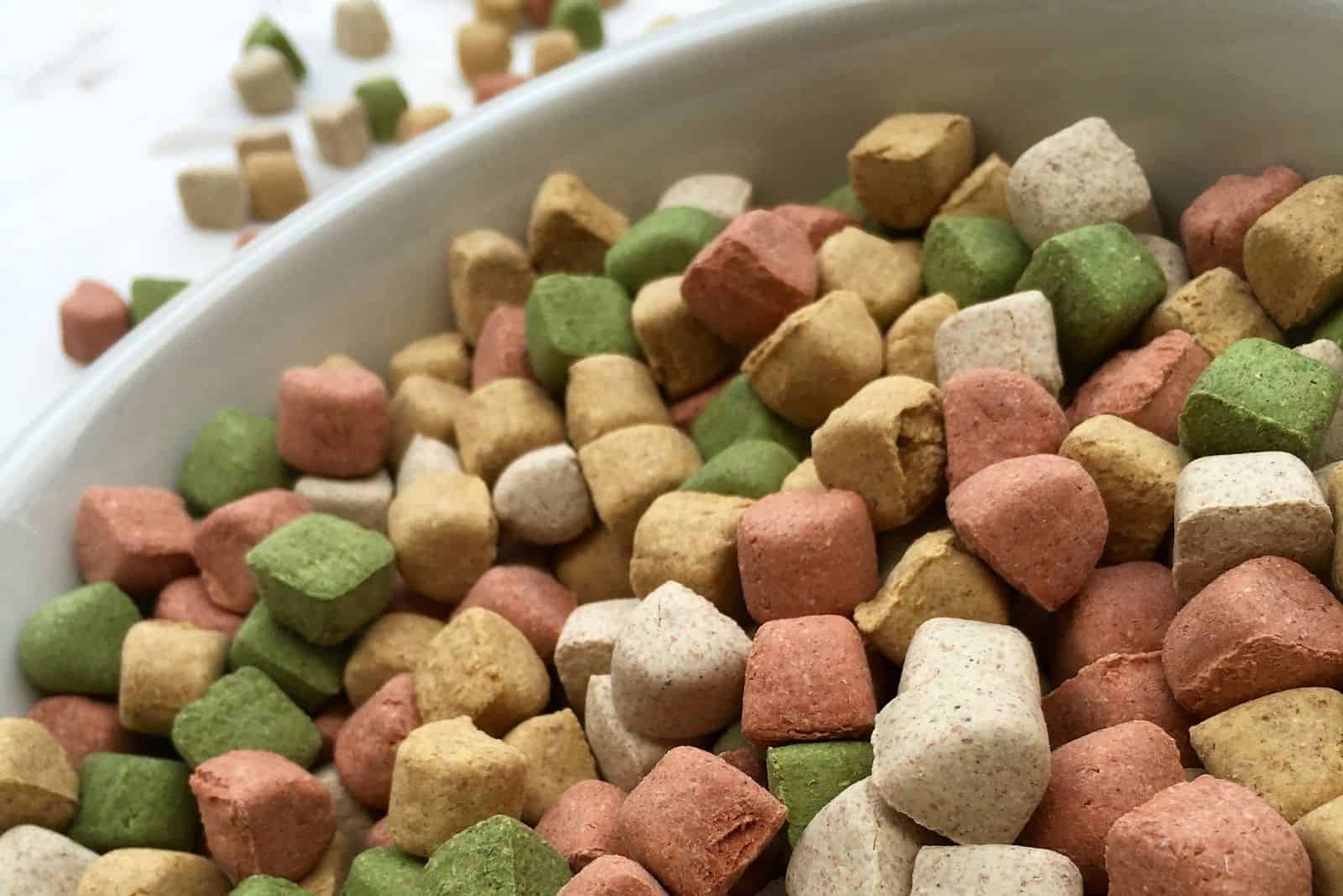
Depending on the dog’s activity and growth, an average blue German shepherd will eat three to four cups of dry food a day.
However, this species is quite prone to bloat, so make sure to divide meals into smaller portions during the day.
This is a big dog, and it does need more food, but control is the key to a happy and healthy puppy.
Their diet should consist of dry food rich in protein to ensure muscle strength for better endurance.
The daily calorie intake should come to around 1,500 calories for adult dogs.
Whether you opt for dry or raw dog food, always ensure the daily intake of vitamins, carbohydrates, proteins, and fats are covered. You do want your dog to stay healthy, don’t you?
Check our German Shepherd feeding chart for more information on this dog’s nutrition.
How Healthy Is The Blue German Shepherd?
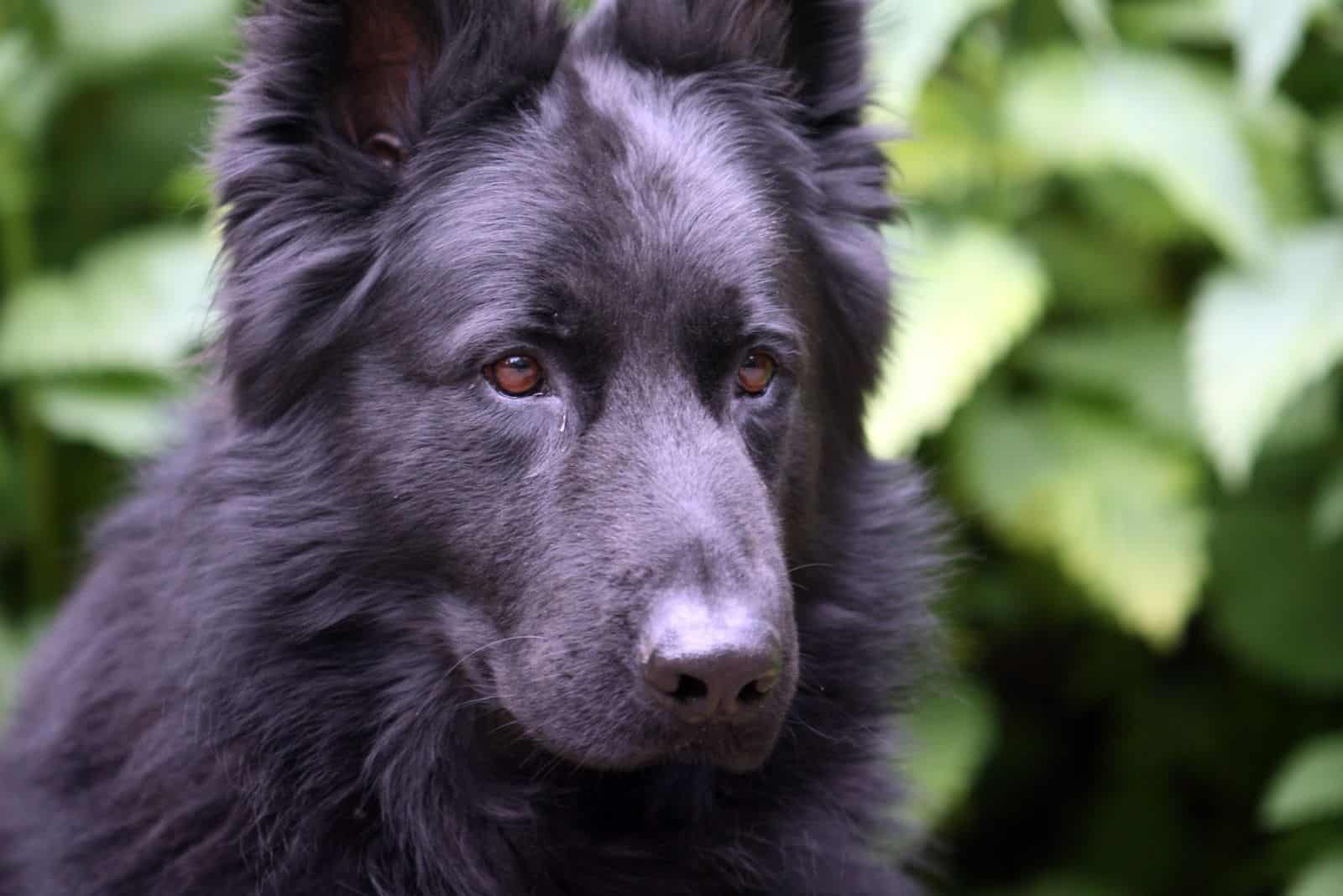
Speaking of your dog’s health… How do you think he or she feels? Sick?
Oh, no, the blue shepherd is not sick if you think it’s the coat color. Never mix the blue coat color specific to a species with health conditions some dogs (e.g., French Bulldog) have.
This is the exact situation white german shepherds face when they’re accused of being too temperamental or albino.
This diluted gene the shepherds carry can cause color dilution alopecia in other dog breeds like Weimaraners. There are no such cases of alopecia with the shepherd breed.
The general health of a blue German shepherd is the same as the standard German shepherd.
The breed has a fairly long lifespan, from nine to thirteen years.
Still, one of the biggest health issues this breed faces is elbow and hip dysplasia, an abnormal formation in the hip and elbow joints that can cause pain and lead to arthritis. It is recommended that the dog’s parents get tested for this health concern.
Since this dog breed is created from one bloodline, one must know there could be a possible genetic mutation. A mutation could cause a condition with the spine cord called myelopathy.
This is a slow and non-painful condition and a big threat to a normal dog life.
A life with this condition is sooner or later… FATAL.
Also, a lot of cases showed congenital heart diseases like:
• pulmonic stenosis
No pain should be ignored, but some cause minor problems.
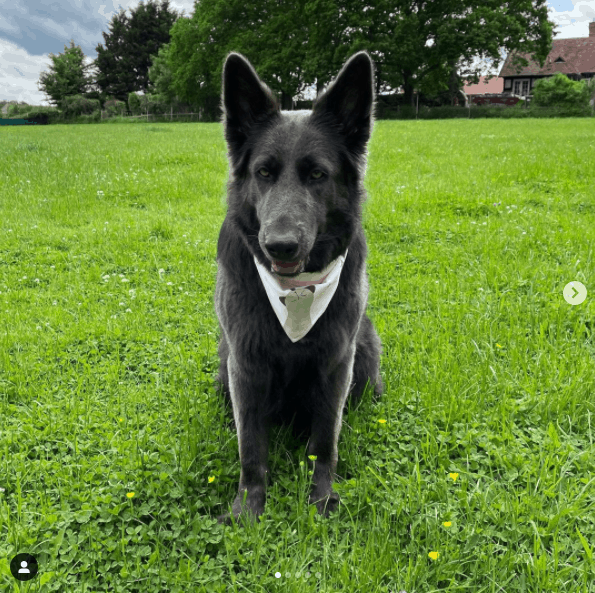
Photo from: @okamiblushepherd
Yet, your vet should be consulted if you suspect:
• panosteitis
• pannus or
• hemophilia
Panosteitis is also called ” growing pains.” The symptom is limping, which occurs in dogs aged five to eighteen months.
Luckily, panosteitis doesn’t last for long, can be treated with medications, or can be resolved on its own once the dog is fully grown.
Pannus is an autoimmune disease that affects the eyes. This condition isn’t treatable but can be managed with medications if discovered early.
The biggest challenge is receiving a hemophilia diagnosis, a genetic disorder causing blood to be unable to clot. Immediate vet intervention and therapy is needed.
It is impossible to wipe out these health conditions, but there is something you can do. When looking for a blue German shepherd puppy, or a pet of any kind, always go with a trusted breeder.
Oh, and regular check-ups at the vet’s office are a MUST, but you already know that, right?
Modern times offer us dog health insurance. It’s only $20 a month in the United States. A price worth paying for your pal’s health.
Grooming: Taking Proper Care Of Your Blue German Shepherd Dog
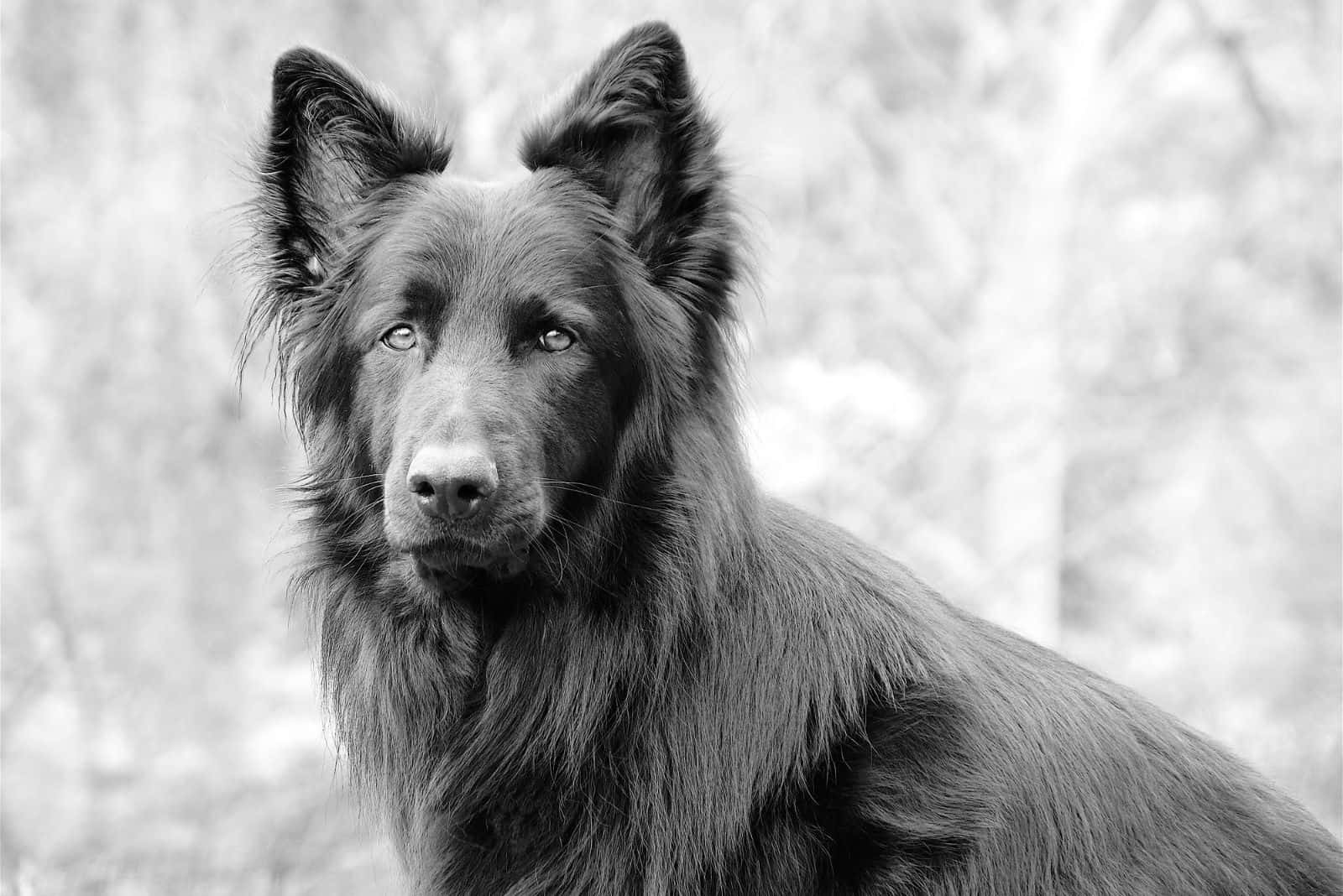
Like any other dog with a medium coat and undercoat, the blue GSD must be brushed regularly. This means brushing two to three times a week.
Because of its dense undercoat, the blue shepherd sheds A LOT in the season. Everyday brushing is simply a must.
No one wants matted fur, especially not your dog.
Regular bathing, every six to eight weeks, also helps with the shedding problem.
Other solutions to extensive shedding include using special products and letting the coat grow long. However, the second option is quite uncommon and could bother the dog in its everyday activities.
It is very important to know which coat type your dog has. There are distinctive differences in grooming a short-haired and a long-haired german shepherd.
Unlike the short-haired, you should not clip the long-haired’s coat as it affects the dog’s heat regulation.
Find a good groomer in your area and let them do the work for you. It will save you the trouble, and you’ll have a healthy dog.
How Much Does A Blue German Shepherd Puppy Cost?
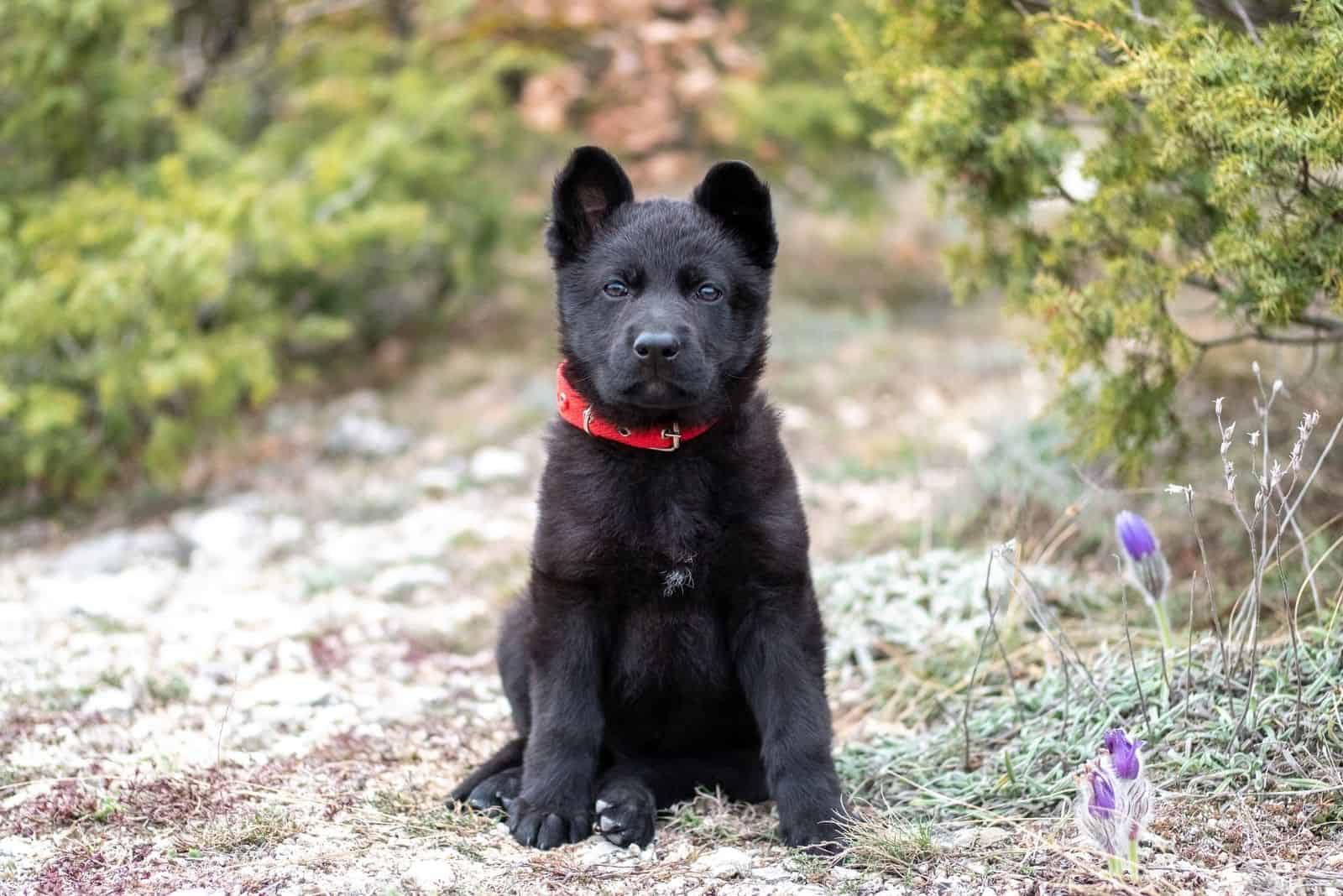
Unless you’re fortunate enough to find a rescue blue German shepherd in one of the many rescue centers across the United States, you will have to purchase one from a breeder.
The price is not much higher than a standard German shepherd puppy, but sometimes you will have to pay for the color. Blue German shepherd puppies go for around $1,500 and up.
Choose a reliable Blue German Shepherd breeder and a puppy with healthy parents.
Like always, if you have a choice between buying a puppy and saving one from a shelter, try to go with option number two.
The adoption usually costs around $50, rarely more, and you will save a life and lots of money for extra toys.
Check online for a list of rescue centers for blue shepherds. You’ll be surprised how many of them are in the United States.
Can You Register A Blue German Shepherd Dog?
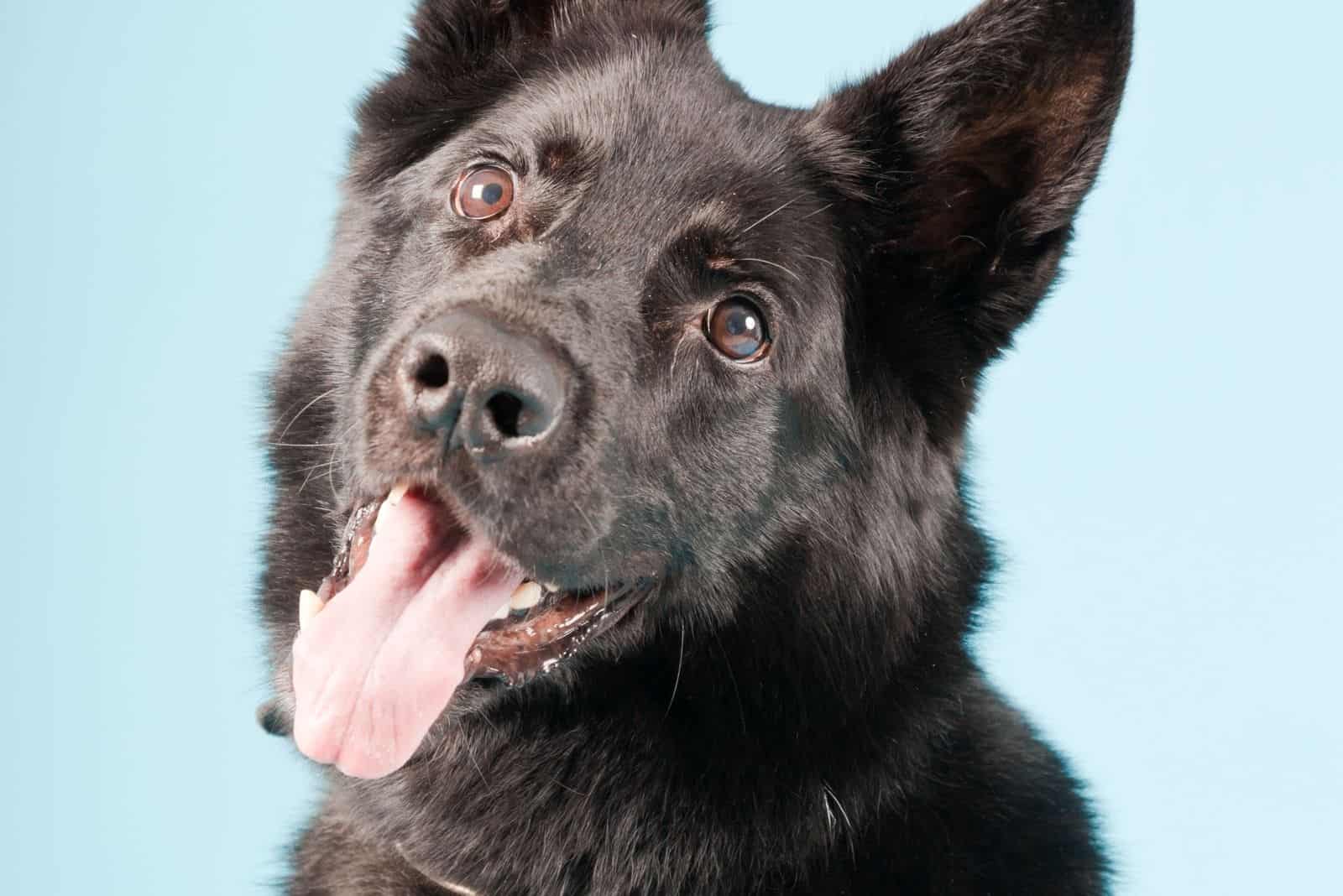
As mentioned before, the blue German shepherd is a German shepherd; therefore, it can be registered with the AKC. It’s just the dilution gene that’s different here, nothing else.
The AKC doesn’t deny any German shepherd registration, no matter which color is in question.
Still, when entering dog competitions, one will face some difficulties.
First, there is no color blue on the papers you need for the German Shepherd Club. That’s odd, isn’t it?
There’s a section for grey dogs, but it refers to wild sable or wolf grey.
A similar destiny awaits anyone who owns a white dog or a silver shepherd. And that’s the sad truth.
Popular German Shepherd Mix Breeds
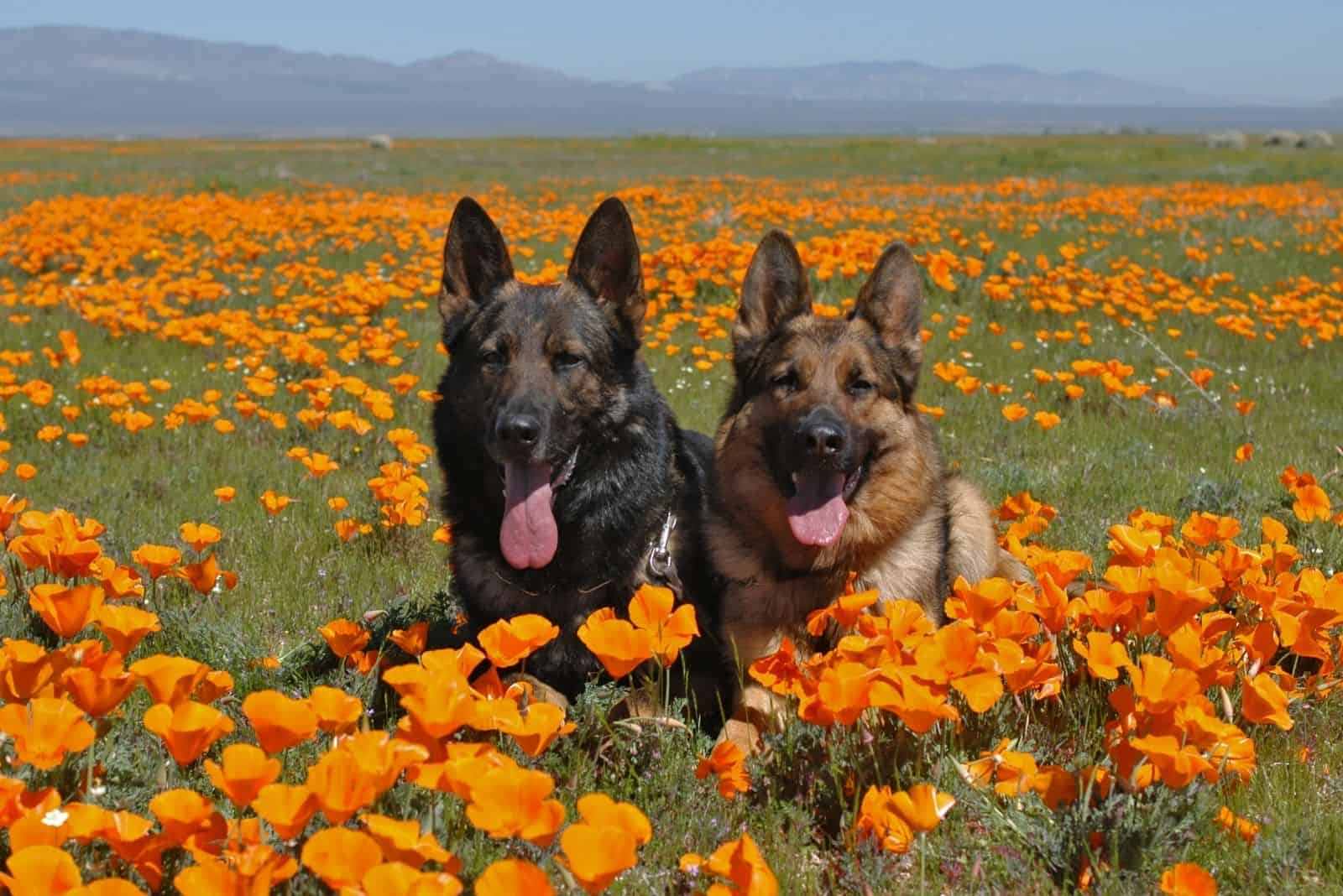
When it comes to breeding other breeds with the blue German shepherd, there are not many rules. This is the breed most associated with mixed breeds.
That’s why we have:
• a golden shepherd (GSD and a golden retriever mix)
• a German sheprador ( GSD and a labrador retriever mix)
• a shollie (GSD and a collie mix)
• a German husky, a shepsky, a gerberian shepsky (GSD and husky mix)
• a corman shepherd (GSD and a corgi mix)
• a German shepherd rottweiler mix
• a chow shepherd (GSD and a chow chow mix)
Of all these unique creations, the golden shepherd and the German shepherd rottweiler mix are the most popular ones.
Some even dare say the golden shepherd is the perfect pet, a mixture of the best traits of both dog breeds. This is an officially recognized mixed breed and definitely a number one choice when thinking about owning a mix-breed.
Generally, the German shepherd is a wonderful dog breed for any dog lover. Make sure you satisfy its needs, and he’ll reciprocate with much love.
Now that you know the myth behind the blue German shepherd, what’s stopping you from getting one… NOW?
Read Next: The Miniature German Shepherd: Mini Cuteness Overload

